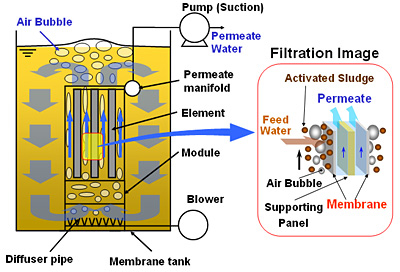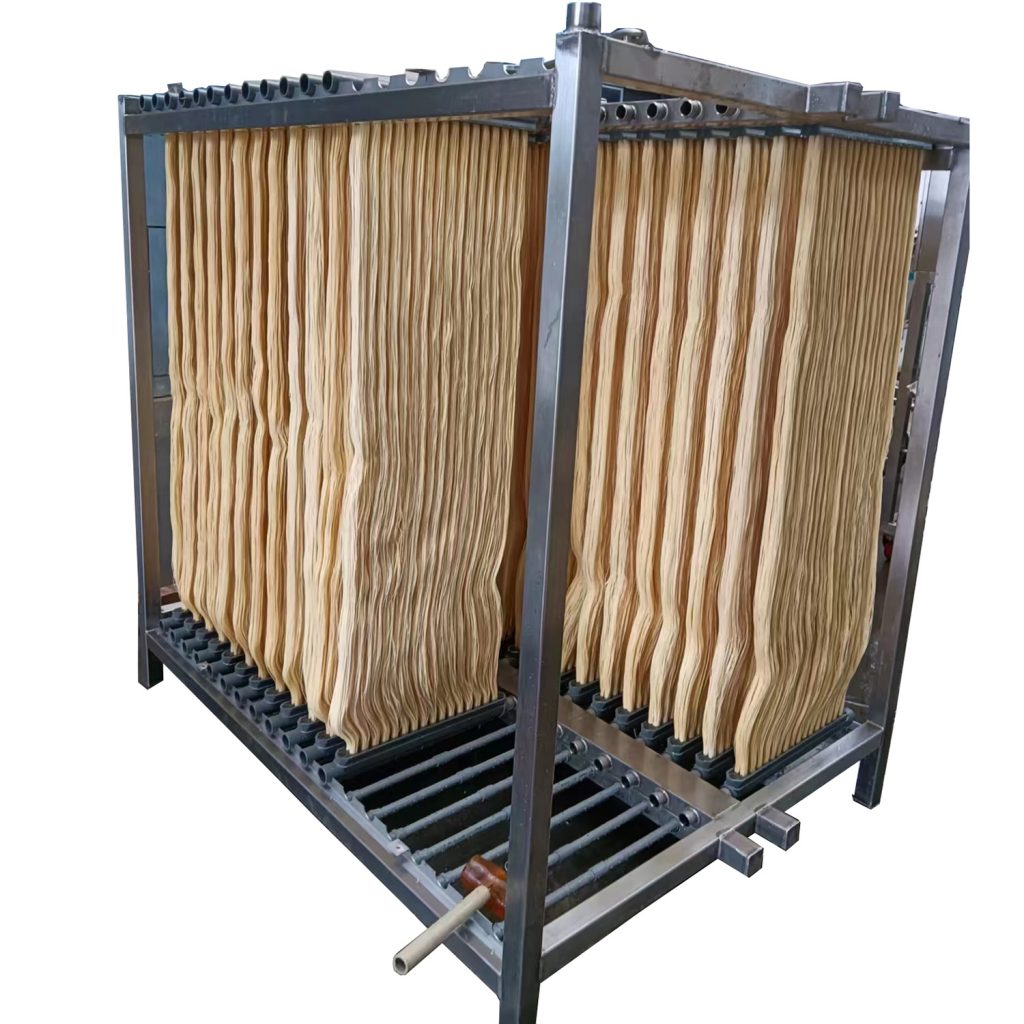How Membrane Layer Bioreactors Are Transforming Water Filtration Solutions
The appearance of membrane layer bioreactors (MBRs) represents a considerable advancement in the field of water purification, merging biological therapy procedures with innovative membrane layer filtration innovations. This assimilation not just enhances the high quality of treated effluent but likewise addresses city area constraints, making MBRs particularly suitable for densely inhabited areas. As worldwide water shortage magnifies, the duty of MBRs in promoting drinkable water reuse and lasting water administration becomes increasingly crucial. The implications of this technology expand past efficiency-- what difficulties and possibilities exist in advance for its prevalent execution?
Overview of Membrane Bioreactors
Membrane bioreactors (MBRs) stand for a substantial development in water filtration innovation, as they combine biological therapy processes with membrane filtering. This integration boosts the efficiency of wastewater therapy by making use of microorganisms to weaken natural contaminants while simultaneously using semi-permeable membrane layers to separate cured water from put on hold microorganisms and solids.
The MBR system generally consists of an organic reactor where the microbial populace metabolizes impurities, complied with by a membrane layer filtering unit that keeps biomass and permits just tidy water to pass through. This twin performance results in greater effluent quality contrasted to standard therapy methods. MBRs can be run in both batch and continuous flow modes, offering flexibility in layout and application.
Additionally, MBRs are defined by their portable impact, making them appropriate for metropolitan setups with area constraints. Membrane Bioreactor. They also enable the recuperation of water for reuse, hence adding to water sustainability initiatives. While MBR innovation has actually gained appeal in community and commercial applications, its functional intricacies and energy demands demand careful factor to consider during application. On the whole, MBRs go to the forefront of improving water therapy performance and high quality, showcasing the potential for ingenious services in environmental monitoring.
Benefits of MBR Modern Technology
The integration of organic therapy with membrane layer filtering provides various advantages for water filtration processes. One of the key advantages of Membrane Bioreactor (MBR) technology is its capability to effectively eliminate both not natural and natural pollutants, leading to premium effluent. The membrane layers work as a physical barrier, protecting against suspended solids and virus from passing through, which boosts the overall security and integrity of treated water.
Furthermore, MBR systems call for a smaller sized impact compared to traditional therapy methods, allowing for more reliable space use. This compact layout is particularly useful in urban setups where land is limited. MBRs likewise show operational flexibility, suiting varying influent top qualities and circulation rates without substantial efficiency destruction.
Furthermore, the procedure supplies improved nutrient elimination capacities, particularly for nitrogen and phosphorus, which are vital for avoiding eutrophication in receiving waters. The minimized sludge manufacturing related to MBR technology also equates to decrease disposal prices, making it an affordable solution in the future - Membrane Bioreactor. In general, the benefits of MBR modern technology position it as a leading choice for cutting-edge and sustainable water filtration systems, attending to both ecological and financial worries
Applications in Water Filtration
Applications of Membrane Bioreactor (MBR) technology in water filtration are diverse and impactful, attending to numerous therapy needs throughout multiple fields. MBRs effectively incorporate organic treatment procedures with membrane purification, making them excellent for municipal wastewater treatment, commercial effluent administration, and even potable water reuse efforts.
In community setups, MBRs are increasingly utilized to improve the top quality of dealt with wastewater, permitting for compliance with stringent discharge guidelines and assisting in the recycling of water for watering and non-potable uses. Their compact design additionally makes check this them suitable for urban environments where room is limited.
Industrially, MBR innovation is used to deal with process water and wastewater, particularly in industries such as food and beverage, drugs, and textiles. By properly removing contaminants and put on hold solids, MBRs help sectors decrease environmental effects while recuperating beneficial resources from wastewater streams.
Furthermore, MBRs are obtaining grip in decentralized water treatment applications, where small-scale systems can be released in remote locations or developing regions. This versatility enables neighborhoods to attain sustainable water administration services, boosting access to tidy water while reducing reliance on conventional therapy approaches.
Instance Studies and Success Stories

In another instance, a fabric production facility in Bangladesh embraced MBR innovation to address its wastewater difficulties. The system reduced chemical oxygen need (COD) degrees from 1,200 mg/L to much less than 100 mg/L, thus fulfilling governing requirements and considerably decreasing ecological effect.
The College of Cape Town's MBR setup has actually shown efficient in dealing with greywater for non-potable reuse on university. This task not just saves drinkable water yet additionally works as an academic version for sustainable methods.
Additionally, a seafood processing plant in Norway made use of MBR technology to treat effluents including high levels of raw material, achieving over 90% contaminant elimination. These study highlight MBR modern technology's versatility and its important function in enhancing water top quality throughout diverse applications.
Future of Water Treatment Solutions
As international water deficiency and air pollution challenges increase, innovative water therapy solutions are coming to be significantly vital to ensure sustainable accessibility to clean water. The future of water therapy depends on the combination of innovative technologies that improve the performance and important site efficiency of purification procedures. Membrane bioreactors (MBRs) go to the center of this evolution, incorporating biological therapy with membrane layer purification to produce high-quality effluent suitable for different applications.

Arising patterns such as source recuperation from wastewater, consisting of nutrients and power, will additionally change treatment facilities right into environment-friendly centers. Advancements in nanotechnology and membrane layer products guarantee improved performance and long life of purification systems.

Final Thought
To conclude, membrane bioreactors represent a considerable advancement in water purification modern technologies, effectively integrating organic treatment with innovative membrane layer filtration. The countless advantages, including enhanced effluent quality and decreased spatial demands, make MBRs particularly suitable for city applications. Their role in drinkable water reuse and sustainable water monitoring highlights their value in resolving global water deficiency obstacles. Proceeded research study and development will certainly even more boost the efficacy and fostering of MBR technology, making sure a resilient linked here future for water therapy remedies.
The introduction of membrane bioreactors (MBRs) represents a significant improvement in the field of water filtration, combining biological treatment procedures with cutting-edge membrane filtration modern technologies. As worldwide water shortage escalates, the duty of MBRs in helping with drinkable water reuse and lasting water management ends up being significantly vital. They additionally make it possible for the recovery of water for reuse, thus adding to water sustainability efforts.As global water deficiency and pollution difficulties escalate, innovative water treatment services are becoming increasingly crucial to guarantee lasting accessibility to tidy water. Their role in potable water reuse and lasting water management highlights their importance in attending to worldwide water shortage challenges.